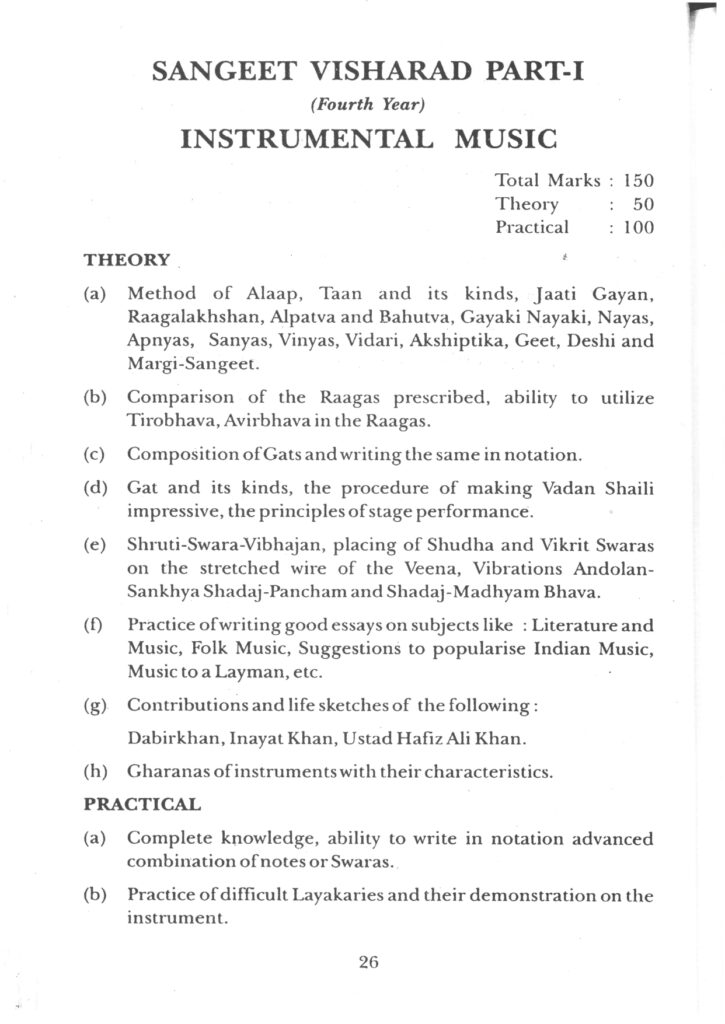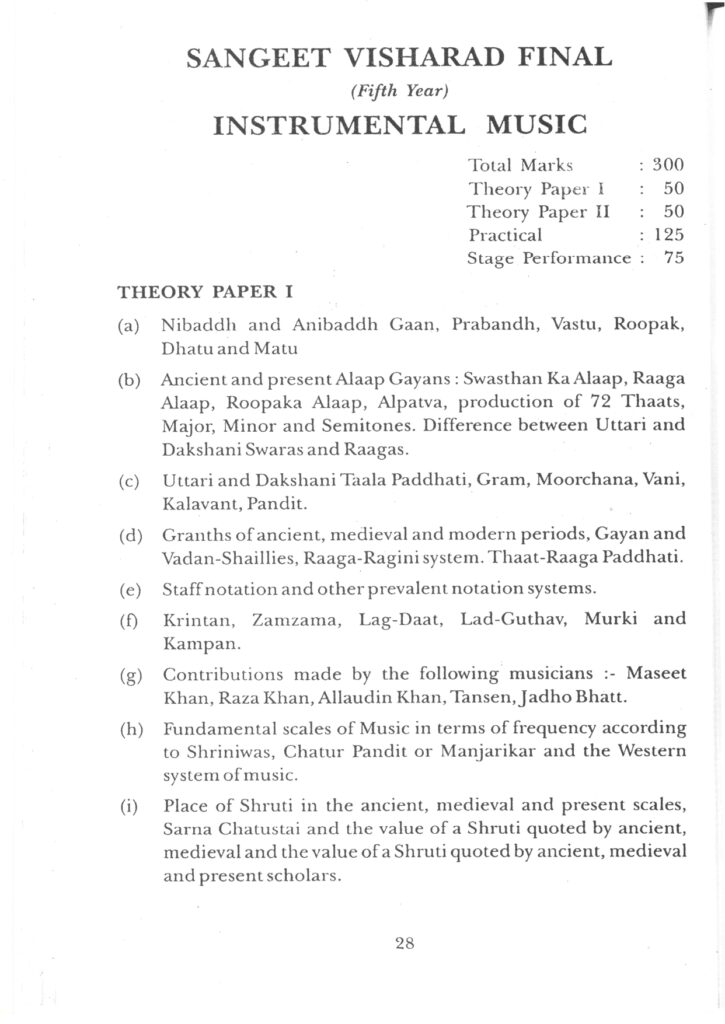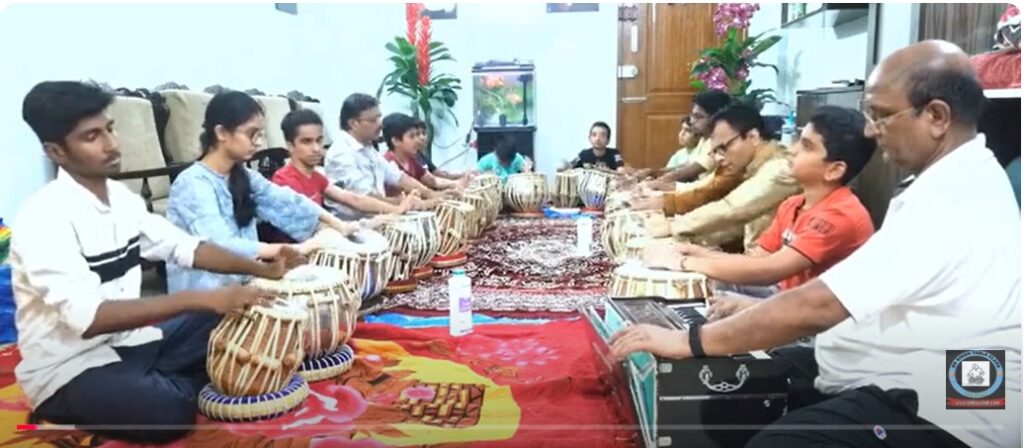The Art of Sound: Visharad Level 1 in Instrumental Indian Music, 🎶 The Art of Sound: Visharad Level 1 in Instrumental Indian Music, Indian classical music is not just a form of artistic expression — it’s a spiritual journey, a disciplined science, and an evolving tradition passed down through generations. The Visharad Level 1 certification is a significant milestone for any student pursuing mastery in instrumental Indian music. It lays the foundation for understanding the rich, intricate world of raga, taal, and performance .Whether you are a budding tabla player, sitarist, flautist, or sarod exponent, this first level of formal music education is where the art of sound truly begins.
🎼 What Is Visharad Level 1?


“Visharad” is a Sanskrit word meaning “skilled” or “proficient.” In the context of Indian classical music education, it refers to a structured certification course, usually divided into two parts: Visharad Part 1 (Pratham) and Part 2 (Final).
Offered by many prestigious music examination boards like Akhil Bharatiya Gandharva Mahavidyalaya Mandal or Prayag Sangeet Samiti, Visharad Part 1 is often considered equivalent to a bachelor’s degree in music. It covers:
- Fundamental music theory
- Basic and intermediate ragas
- Taal understanding and application
- Instrument-specific techniques
- Performance skills
🎻 Instruments Covered
While the syllabus structure may differ slightly depending on the board, Visharad Level 1 typically includes the following instruments under the “instrumental music” category:
- Tabla – the rhythmic heart of Hindustani music
- Sitar – the melodic icon of Indian classical music
- Bansuri (flute) – ethereal and emotive wind expression
- Sarod and Santoor – deep, resonant stringed instruments
- Harmonium – used both solo and in accompaniment
📚 What You Learn in Visharad Level 1
At this level, the student is trained not only in playing but also in understanding the structure and philosophy of music. Here are the core components:
1. Raga Theory and Practice
Students study 5–7 foundational ragas, such as:
- Yaman
- Bhupali
- Bhairav
- Desh
Each raga includes: - Aroh/Avroh (ascent/descent)
- Pakad (key phrase)
- Vadi/Samvadi (dominant/sub-dominant notes)
- Time of performance
2. Taal Structure
Students are introduced to taals like:
- Teentaal (16 beats)
- Dadra (6 beats)
- Keharwa (8 beats)
They learn how to keep laya (tempo), recite theka, and play simple compositions with clarity.
3. Practical Performance
For instrumentalists, playing selected ragas with alaap, gat, and taal accompaniment is key. For tabla players, the emphasis is on:
- Theka clarity
- Simple kaidas and tukdas
- Accompaniment techniques
4. Music Theory
Topics include:
- Elements of Naad (sound)
- 7 swaras and their properties
- Types of instruments (Tat, Avanaddh, Sushir, etc.)
- Introduction to Indian music notation system
👩🎓 Who Should Pursue Visharad Level 1?
- Music students aiming for formal training and credentials
- Teachers looking to validate or expand their expertise
- Performers who want to strengthen their theoretical base
- Amateur enthusiasts with a serious interest in classical music
There’s no upper age limit. In fact, many adult learners take up Visharad exams out of passion!
🌟 The Cultural Significance
Indian classical music is deeply connected to our cultural identity. By learning an instrument at this level, students don’t just acquire skills — they become part of a lineage of musical tradition.
As Pandit Ravi Shankar once said, “Music can be a bridge to connect the divine with the soul.”
📈 Why This Matters in Today’s World
In an age dominated by fast-paced digital music, Visharad training brings focus, discipline, and mindfulness. It also enhances:
- Memory and concentration
- Emotional expression
- Cultural appreciation
- Global music collaboration
In fact, Indian classical instruments are now being featured in modern fusion genres, world music albums, and even Hollywood soundtracks!
🎧 Real-World Application
Many popular musicians today have a classical base. For example:
- Zakir Hussain (tabla) – globally acclaimed for fusion and film
- Niladri Kumar (sitar) – blends classical with electronic music
- Rakesh Chaurasia (flute) – known for cross-genre collaborations
Their journeys often began with rigorous training — like the Visharad path.
📝 Final Thoughts
Visharad Level 1 in Instrumental Music is more than just an exam. It’s the beginning of a deep musical relationship — between the player, the instrument, and the art form itself. It opens the door to self-discovery, expression, and mastery.
Whether you’re drawn to the meditative tones of the sitar or the rhythmic power of the tabla, this level will ground you in technique, tradition, and passion.
🎯 Call to Action:
Are you ready to begin your journey in the art of sound? 📚🎵
Explore your nearest music school, connect with a guru, or start self-learning with online courses. The path to musical mastery starts here.
https://www.youtube.com/@BhagawanSingh


